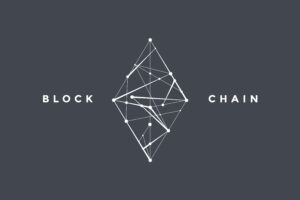It’s time to look back at what a year we’ve had and round up this year’s most popular blog articles. Here’s our list of the ten most-read posts in 2020. For those who’ve visited the site and have read the blog, thank you. We hope you’ll continue to come back for our insights in the new year. Happy holidays from Espeo.
In 2020 blockchains — especially private versions have seen greater enterprise adoption. Proofs of concept and full-blown products continue to emerge to try to solve many pressing challenges. From improving back-office processes to tracking commissions, large companies are building applications that incorporate distributed ledgers.
Greater transparency, as well as improved auditing, are the main themes of blockchains for enterprises. Better focus in the industry enables us as providers to do the hard work of building real solutions to real market problems. Like any other technology, blockchains have to prove they’re worth it.
Commission management and internal settlements are the most popular enterprise use cases so far. As more businesses find ways to use the immutable auditing of blockchain technology, new tools will continue to launch.
At Espeo, we’re committed to designing blockchain systems that fill these gaps in the market. Whether it’s for commission management, financial settlements, invoice processing or contract validity, we’re helping to build some of the next great solutions.

Pros and cons of blockchain: Do I even need one?
Questions about the pros and cons of blockchain come up a lot in our discussions with clients. Maybe a traditional database will work just fine, or maybe the specific features of a distributed ledger will greatly improve your business. We’ll be the first to tell it to you straight. In this article, we examine what blockchian does, what it doesn’t do and whether one will do anything for your business.

How to build and integrate external databases with Hyperledger Fabric
Lead blockchain developer Tomasz Kaliszuk lays outways to integrate external databases with a Hyperledger Fabric-based application. These tips came form a few of the blockchain projects we completed in 2020 that incorporated private blockchains in the design.
Usability is still a crucial topic in blockchain development. Making sure the application is both effective and usable takes some careful planning and expert design. Sign up to the webinar to see the full interview.
Ways private blockchains empower patients to protect their medical data
Healthcare is one industry that’s slow to adopt IT solutions. Doctors and administrators still perform a lot of manual tasks on paper such as storing and transferring data. Apps that use a distributed ledger are some ways to improve medical records storage, just as it is with pharmaceutical supply chains.
We’re created a healthcare data application in-house to demonstrate how a distributed ledger can manage medical records, keeping them secure and private.
Hyperledger Fabric for commission management
Enterprise blockchains such as the Linux Foundation’s Hyperledger Fabric can be a network layer to track commissions between a company’s branches. Its distributed ledger can form part of an application to record data entries in a transparent way and hold it in a neutral database no one can change easily. Tamper-resistant timestamping feature streamlines expensive manual auditing and makes it more difficult to change transaction data once you enter it.
This can help enterprises keep track of referrals and commission payments — much faster than traditional systems.
Hyperledger Fabric for financial settlements
Payment cycles, inconsistent transactions, and complex settlement processes are a few of the biggest challenges in settlement processes today. Trade is the lifeblood of the modern global economy. Thousands of small transactions pass within and between organizations each week. Trust between partners is crucial in business. A solution built on Hyperledger Fabric can replace escrow services and make finance departments much more efficient.

Hyperledger Fabric for verifying contract validity
Blockchain technology has the potential to fundamentally transform the way governments and companies do business, offering a new infrastructure for building the digital economy. We strongly believe that better transparency and accountability help foster trust and supports sustainable business practices across various sectors.
Just as Hyperledger Fabric serves as a tool to improve invoice processing, it can also improve ways to manage contracts. This article discusses how the use of blockchain in contract validity brings transparency and builds trust among parties.
Hyperledger Fabric for invoice processing
Invoice processing theft costs the UK economy alone £127 billion annually. With the rise of crime-as-a-service web, where an invoice scam can be crafted in less than 24 hours with the cyber-criminals accepting a portion of the gains as their fee. Hyperledger Fabric eliminates the threat of such scams by leveraging blockchain technology, triggering transparent and trusted automatic actions for approved invoices.

Blockchain art is opening new avenues for artists and collectors alike
Blockchain art is a bit of a paradox. Creatives and STEM people generally don’t mix well. However, several recent projects are bringing the two worlds together in fascinating ways. Blockchain technology is not only a tool for artists and collectors to protect the value of their work.
It’s also increasingly becoming a medium of expression. Digital artists especially can now control the authenticity and scarcity of their work with the help of distributed ledger technology. Ownership titles, provenance, and even art asset tokenization are a few of the compelling use cases emerging.
A practical guide to Hyperledger Fabric security
Blockchain is definitely still a buzzword in the IT world. Uses beyond cryptocurrencies continue to intrigue the business world. But how can you be sure of Hyperledger Fabric security?
Stories of hacked crypto stock exchanges or their users is a never-ending story. This makes me suspect that many don’t know what they’re really doing, and don’t fully grasp the security implications. This article is to help people interested in blockchain technology and who want to understand its security aspects and take appropriate security measures.
Multi-cloud deployment of blockchain infrastructure
Cloud (or Cloud Computing) was one of the largest buzzwords of the last decade. Still many people identify “the cloud” with Amazon Web Services. Despite that, there are several other cloud computing vendors that are worth looking at, especially if you’re building a blockchain solution supporting a large group.
These are primarily the Google Cloud Platform, Microsoft Azure, Oracle Cloud, Rackspace and Hetzner Cloud. Below, Tomasz Klim discusses their advantages and shows how we deployed our blockchain infrastructure.
Conclusion
So that’s the roundup of our top ten most popular articles from the blog in 2020. Thanks for reading and we hope you come back. Let us know in the comments if there are any topics you’d like us to cover. Merry Christmas and have a happy New Year! We’ll see you in 2021.









